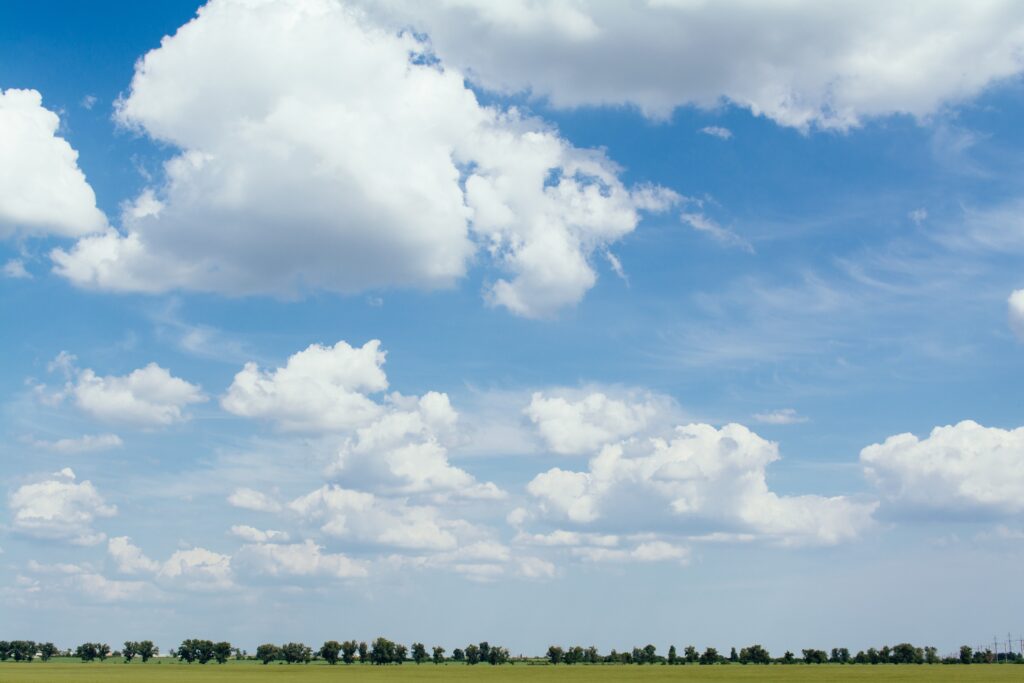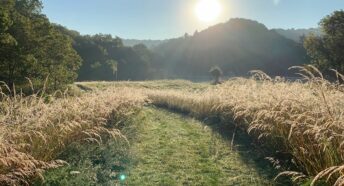Head in the Clouds.
With the beautiful, blue skies we have been seeing recently, now is the perfect time to have a go at cloud gazing! These heavenly vapours are one of many intricate beauties created where the Earth’s atmosphere interacts with space. The recent warm weather has caused plenty of water vapour to rise, condense and form the fantastic variety of cloud formations we see over the UK. They are classified into 10 different groups according to characteristics such as appearance, height and whether they are likely to contain rain.
 Taking time to look up and appreciate the complexity of our planet helps focus your thoughts away from negative worries. Instead you are able to become more self-aware whilst you wonder and gaze at the mysteries of the sky. As we already know, spending time outdoors in daylight helps you produce vitamin D, this in turn supports mood regulation. However, engaging in the tranquillity of cloud spotting isn’t just restricted to the middle of the day.
Taking time to look up and appreciate the complexity of our planet helps focus your thoughts away from negative worries. Instead you are able to become more self-aware whilst you wonder and gaze at the mysteries of the sky. As we already know, spending time outdoors in daylight helps you produce vitamin D, this in turn supports mood regulation. However, engaging in the tranquillity of cloud spotting isn’t just restricted to the middle of the day.
For rarer Noctilucent clouds the best time to spot them is just after sunset or just before sunrise. Watching the horizon whilst facing the sun during these twilight hours you may see clouds that appear to glow, hence their known as “Night shining clouds”. Noctilucent clouds are composed at high altitudes, where ice crystals form around dust particles. These crystals scatter sunlight so when the Sun is below the horizon but still illuminates the clouds from below, they can appear to glow in shades of Blue, White or Silver. This fascinating meteorological phenomenon is what gives them their name. Cloud spotting simply requires a little patience as well as some attention to detail.
From Altocumulus to Stratus, fluffy cumulus and rare Noctilucent. There is loads of variety to be seen in the Buckinghamshire skies. A handy guide can be found here: www.rmets.org/metmatters/metmatters-guide-cloud-spotting

Although you don’t need equipment we have included a few tips and things you may wish to bring along:
* Find a location with a clear and unobstructed view of the sky. This could be a park, a rooftop. Choose a day with good visibility and minimal light pollution if you’re planning to spot clouds at night.
* Bring a blanket or something comfortable to sit or lie down on. Cloud spotting should be relaxing, so being comfortable will enhance your experience.
* Binoculars, while not necessary, can help you see cloud details more clearly, especially for high-altitude formations or faint clouds at night.
* If you enjoy photography, you can bring a camera or smartphone to capture interesting finds.
* Reference Materials like identification guides or apps will help you learn more about different types of clouds and their characteristics.
* Lastly a notebook and pen, not essential but perfect for documenting your observations and thoughts, writing can help create a space for mindfulness and calm.







